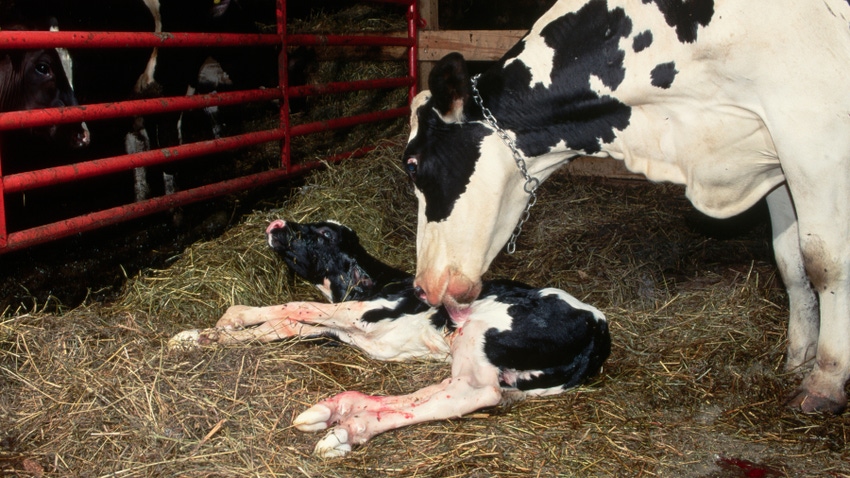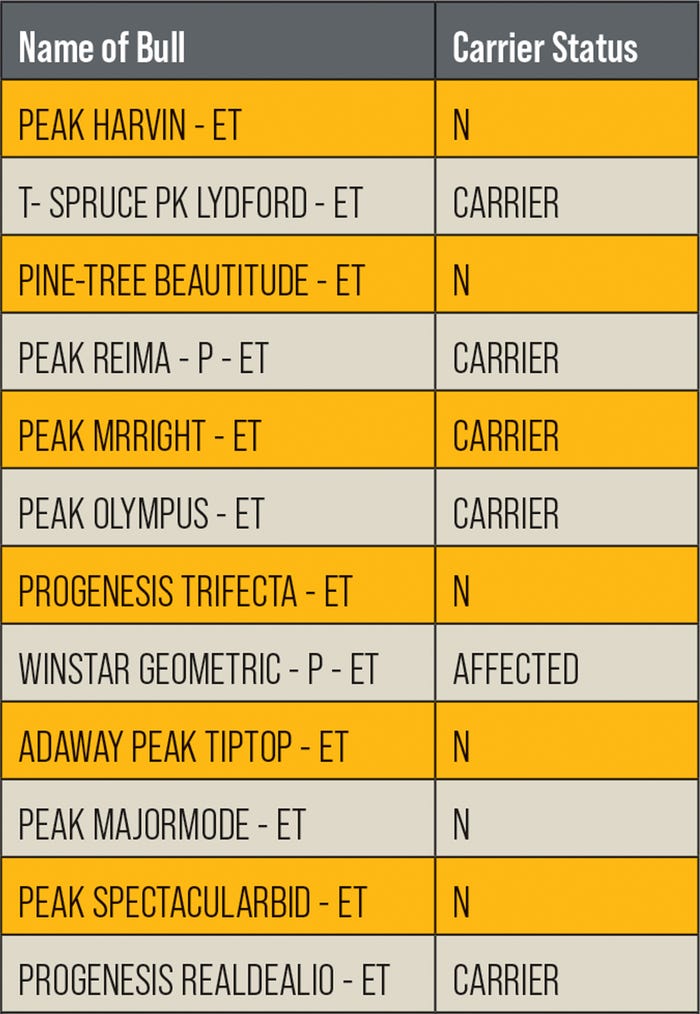November 21, 2023

by Heather Schlesser
In 2020, calves unable to stand at birth or shortly after were seen by veterinarians in Pennsylvania. Researchers determined that a genetic defect on chromosome 16 caused this issue. Affected animals had two copies of a mutation in the CACNA1S gene on chromosome 16.
The CACNA1S gene makes the main piece of a calcium channel found on the outside membrane of muscle cells. The job of these CACNA1S calcium channels is to transmit the signal from the nervous system to the interior of the muscle to other calcium channels that cause muscle contraction, allowing the body to move. Without CACNA1S calcium channels, the signal is not “forwarded” to the interior calcium channels, preventing the muscle from contracting and resulting in muscle weakness.
The researchers identified Southwind Bell of Bar-Lee as one of the earliest-known carriers of the mutated allele. In a 2009 article by Schlesser et al., they identified Southwind Bell of Bar Lee as having a bimodal distribution of his offspring for perinatal survival. This means that some of his offspring were more likely to survive than others. Southwind’s most prominent descendants, Roylane Socra Robust and Seagull-Bay Supersire, have also been identified to have the mutated gene. While the prevalence rate of the mutated gene in the Holstein population is currently unknown, it is important to realize that the mutation has been traced back to some influential family lines.
Currently, bull studs are testing their AI bulls for the presence of this mutation. Some bull studs still use bulls identified as having this mutation, while others have eliminated these genetics from their herds. If a bull stud decides to maintain bulls with this mutation, it is publicizing this information so producers can make informed decisions about bull use. If you have cows and heifers with similar pedigrees as the affected bulls, then it is not recommended to breed with affected bulls.

The unique thing about this defect is that some animals with two copies of the mutated allele survive to adulthood. Winstar Geometirc-P is one such animal that has two mutated genes. It is not known why some animals can survive, but management differences between farms is thought to be the reason.
What does this mean for you and your herd? It means sire selection decisions are more critical today than yesterday. While genetic testing is available through Feanix Bio for $10 a test, it can get costly to test your entire herd. Breeding with bulls tested and shown to be free of the mutated gene will allow you to breed your heifers and cows without worry.
Keeping records of animals in your herd with either one or two copies of the mutated gene is key to ensuring you make good sire selection choices in the future to avoid offspring with two copies of the mutated gene. If you breed females to a bull with a mutated gene, it is important to ensure the female’s pedigree does not also have animals with the mutated gene. Having different ancestors helps to eliminate the possibility that the female has a copy of the mutated gene. Information on this mutation is still evolving as more animals with the defect are identified.
Schlesser is the University of Wisconsin Extension dairy agent for Marathon County.
You May Also Like




